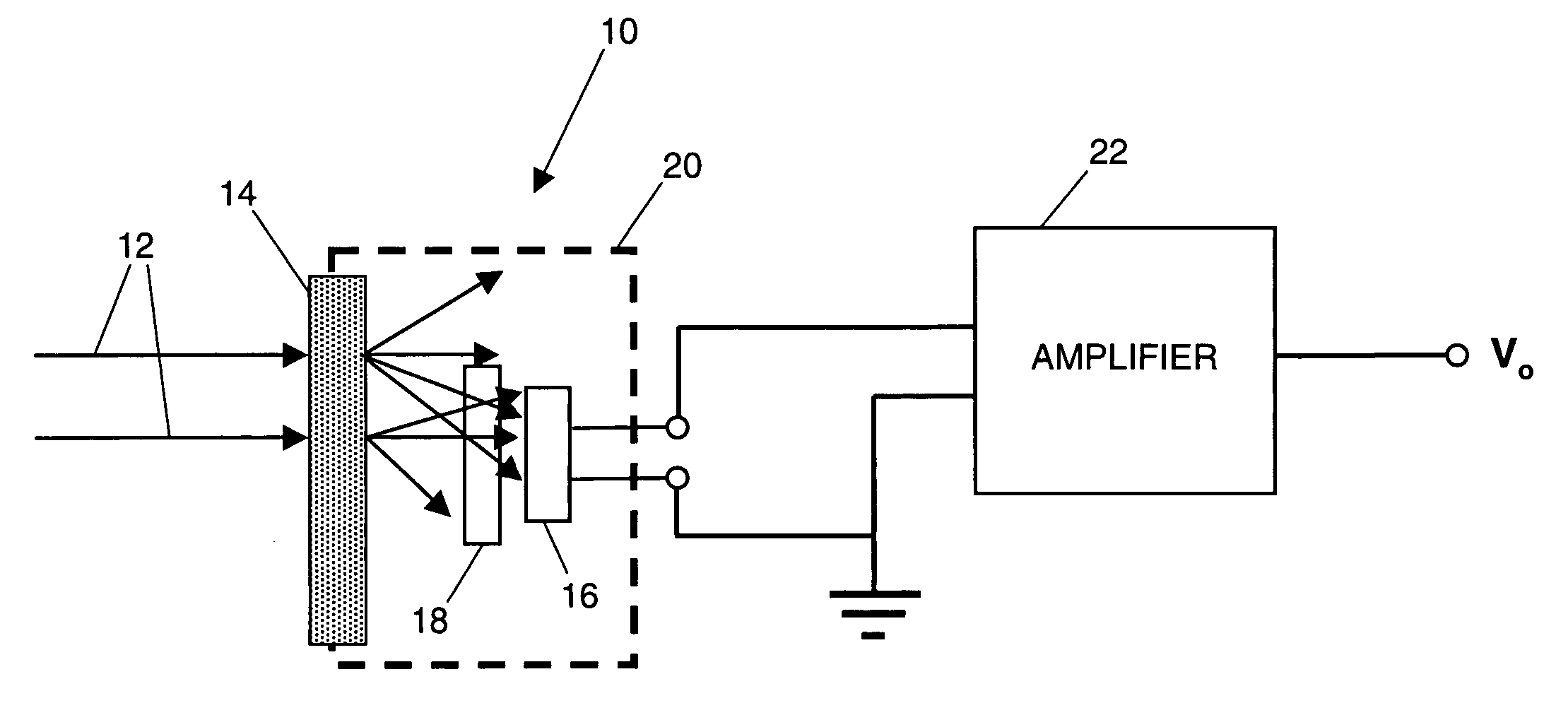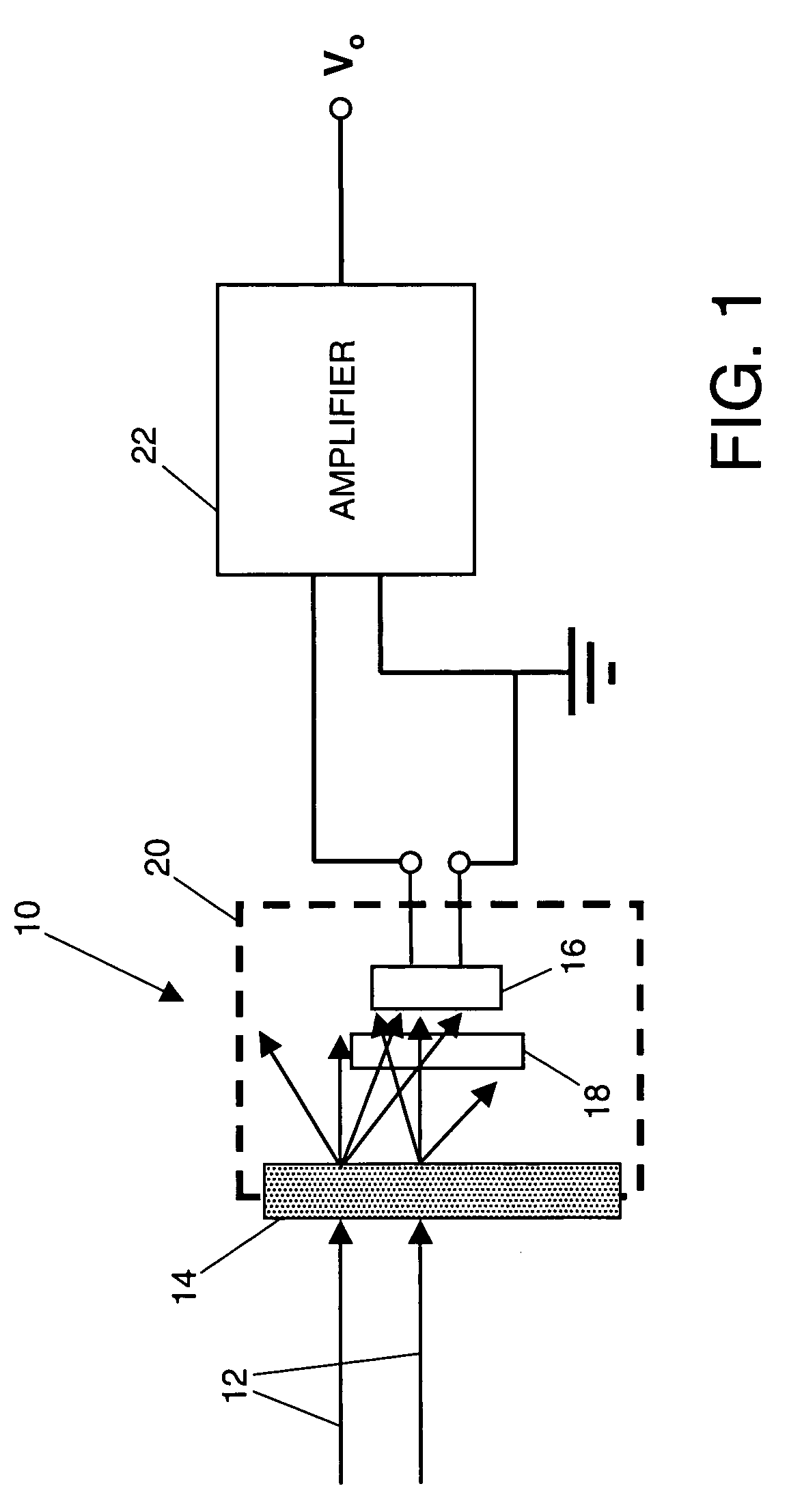Laser burn through sensor
a sensor and laser technology, applied in the field of laser burn through sensor, can solve the problems of high radiation exposure level, damage to anything along unwanted optical path, and high risk, and achieve the effect of reducing the need for alignment of optical detectors
- Summary
- Abstract
- Description
- Claims
- Application Information
AI Technical Summary
Benefits of technology
Problems solved by technology
Method used
Image
Examples
Embodiment Construction
[0017] As shown in the drawings for purposes of illustration, the present invention pertains to a protective device for sensing laser burn through of an optical component. As discussed above, high energy laser equipment poses a serious risk of damage to equipment and personnel unless means are provided for sensing any deviation of laser radiation from its intended optical path. Thermal sensors of the prior art are inherently slow to react to laser burn through and may also be sensitive to heat radiated from other sources.
[0018] In accordance with the invention, one or more optical detectors are employed to detect the presence of laser radiation in locations where there should be none. Use of an optical detector significantly reduces the reaction time of the sensor, relative to one of the thermal type, and therefore significantly reduces the risk of damage from an errant laser beam that has burned through an optical component.
[0019]FIG. 1 illustrates the principle of the present in...
PUM
| Property | Measurement | Unit |
|---|---|---|
| Temperature | aaaaa | aaaaa |
| Power | aaaaa | aaaaa |
| Energy | aaaaa | aaaaa |
Abstract
Description
Claims
Application Information
 Login to View More
Login to View More - R&D
- Intellectual Property
- Life Sciences
- Materials
- Tech Scout
- Unparalleled Data Quality
- Higher Quality Content
- 60% Fewer Hallucinations
Browse by: Latest US Patents, China's latest patents, Technical Efficacy Thesaurus, Application Domain, Technology Topic, Popular Technical Reports.
© 2025 PatSnap. All rights reserved.Legal|Privacy policy|Modern Slavery Act Transparency Statement|Sitemap|About US| Contact US: help@patsnap.com



